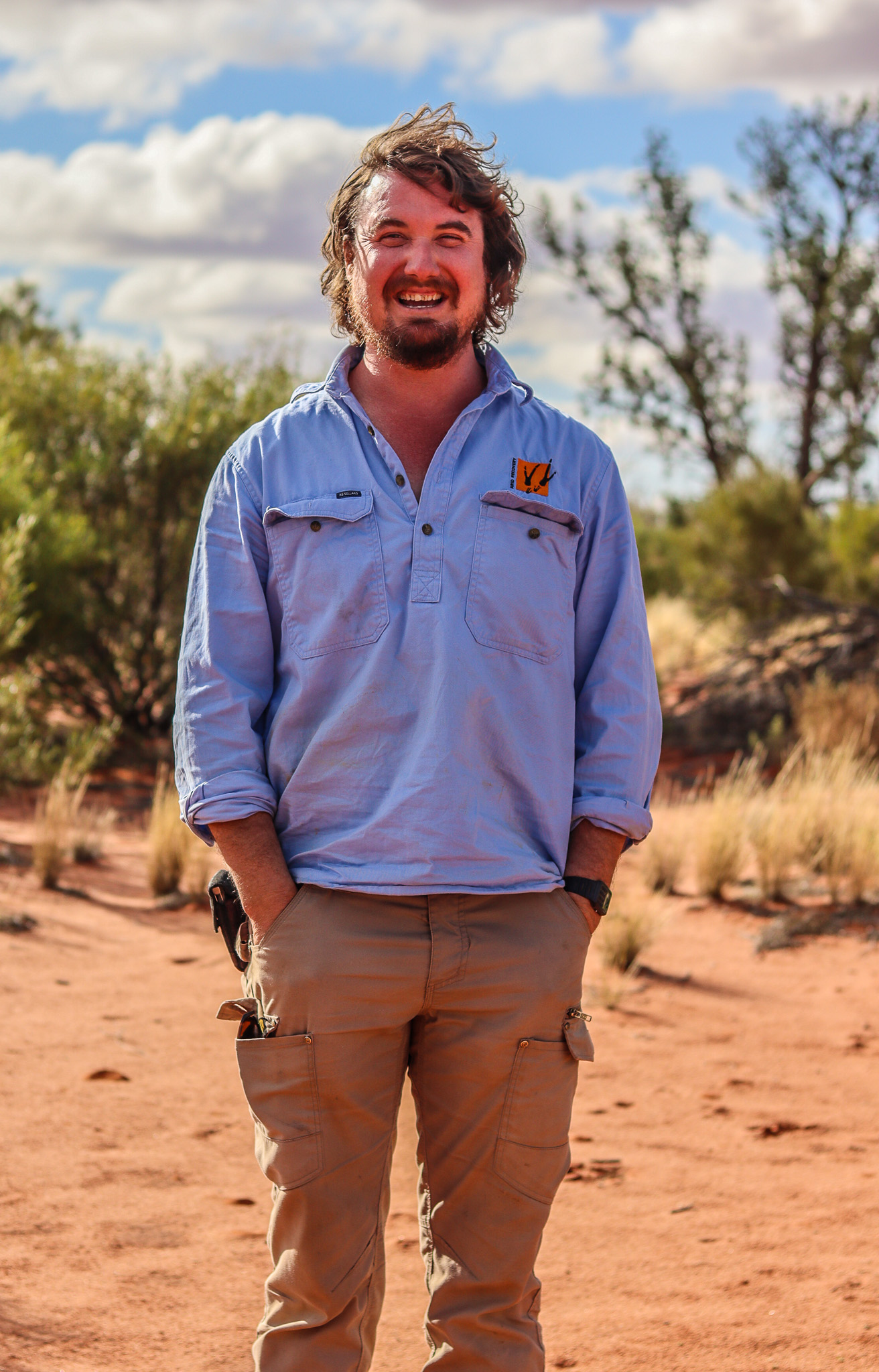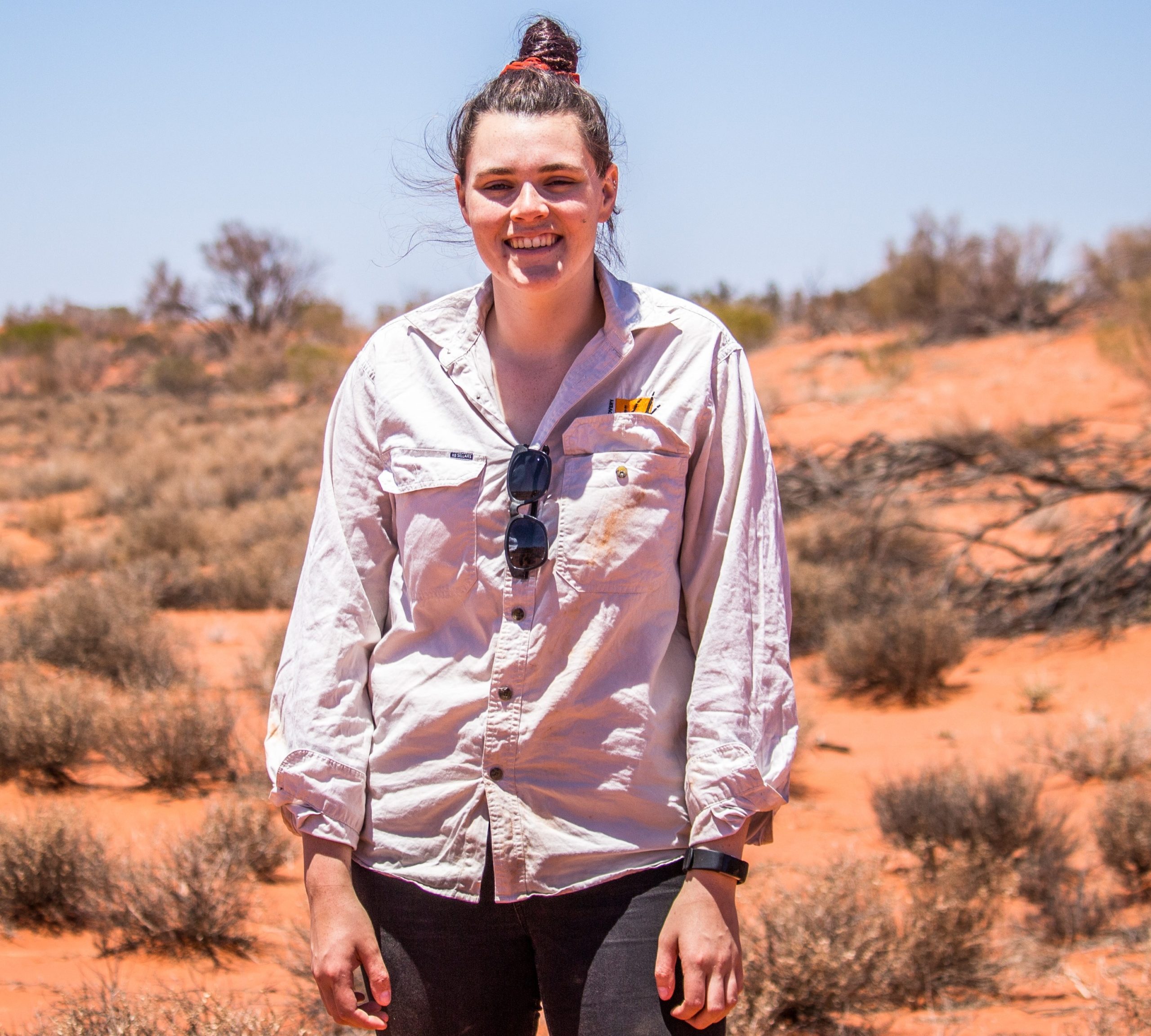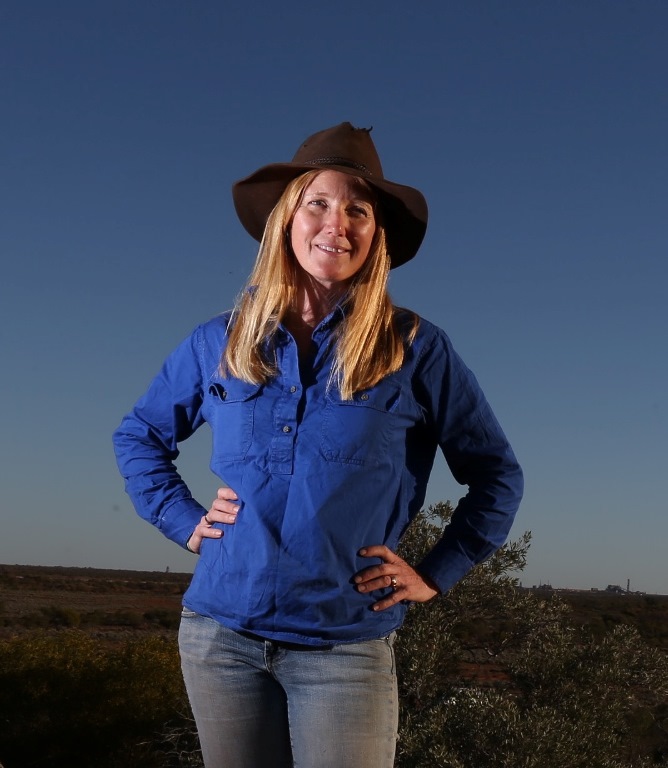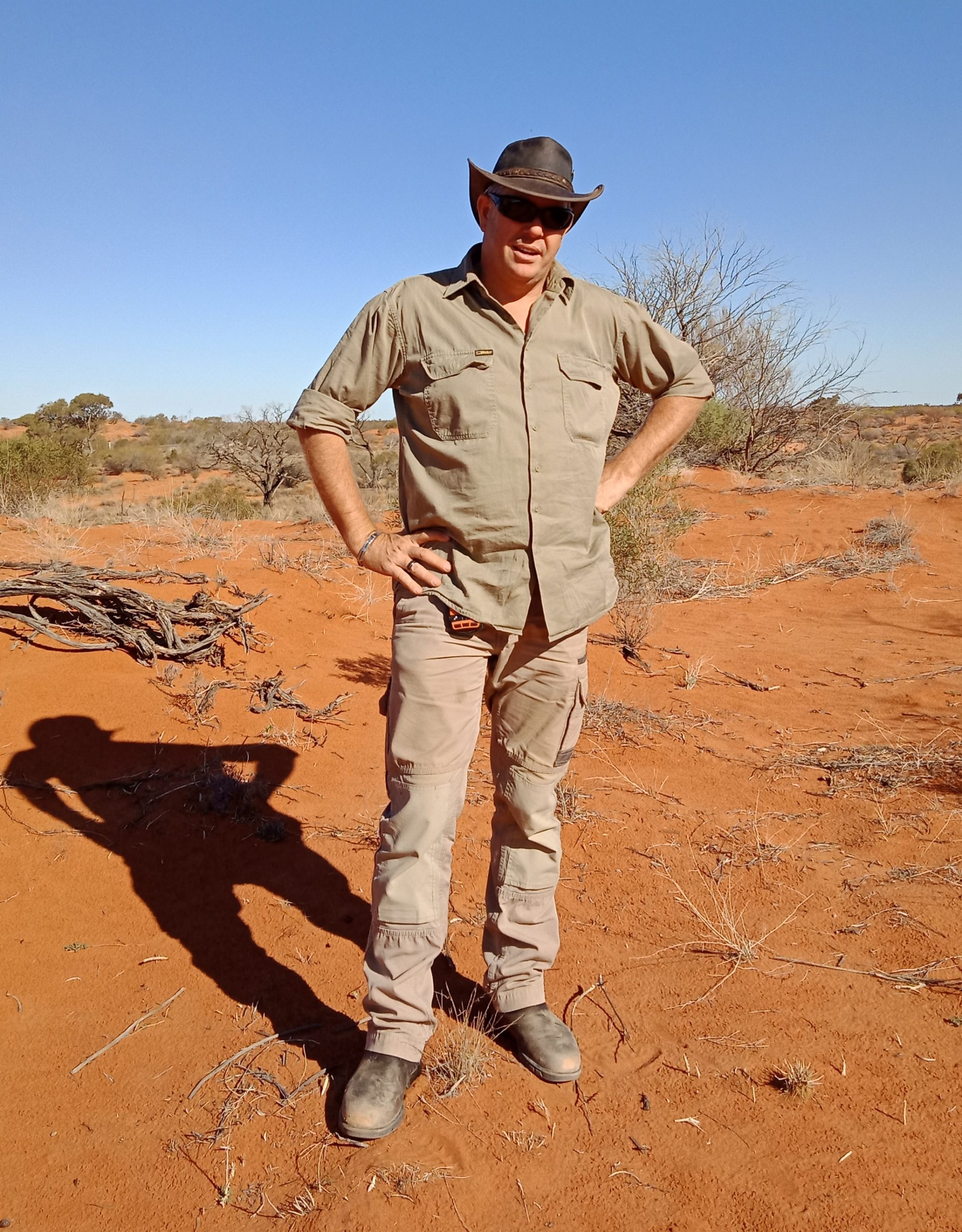[wp_sitemap_page]
Pages
- About us
- Adopt
- Annual Reports
- Blog
- Board of Directors
- Burrowing Bettong
- Campaigns
- Contact Us
- Controlling Feral Predators
- Dingoes
- Donate
- Donation Confirmation
- Donation Failed
- Donation History
- Donor Dashboard
- Education Visits
- Events
- Events Copy
- Feral Cats
- Feral-proof Fence
- Flora
- Greater Bilby
- Greater Stick-nest Rat
- Home
- Internships
- Kowari
- Meet Our Wildlife
- Merchandise
- My Account
- Order Tracking
- Other Native Mammals & Reptiles
- Plains Mouse
- Prey Naivety
- Privacy
- Products
- Publications
- Recurring Donations
- Red Foxes
- Refund Policy
- Research
- Research Impact
- Research opportunities
- Reserve Layout
- Shark Bay Bandicoot
- Shop
- Sitemap
- Starlight Dinner
- Strategic Plan
- Support Us
- Terms and Conditions
- Tours
- Visit Us
- Volunteer
- Western Quoll
Posts by category
- Category: Kowari
- Category: Our Research
- Birds of Arid Recovery (Part I)
- Stubbies to the rescue
- Ducks in the desert: transient oases in a sunburnt country
- Boom year bonanza – Pitfall trapping 2023
- Thylation grant gets more Felixers out around Arid Recovery to protect kowaris from feral cats
- Can art help threatened species survive heatwaves?
- Searching for bandicoots
- Art as architecture to help wildlife survive heatwaves
- After the Rain – Pitfall Trapping 2022
- A brit in the bush
- Having a whirl of a time
- Leading the charge: testing small electric 4WD for outback conservation work
- Small team, Big research
- After our worst drought, a very different fauna community emerges
- Annual Trapping Episode 2021: The Mammals Strike Back
- Wildlife get a fighting chance against feral cats in two Eureka Prize hopefuls
- Island bilbies to find a new home with their desert cousins
- Who let the feral cats in?
- What’s about after the drought? Insights from pitfall survey at Arid Recovery
- Rain and Hope
- How To Make A Water Fountain
- Do sneaky quolls get the girls? Paternity testing the first generation of Arid Recovery quolls
- Desperately dry: Arid Recovery struggles through worst drought since reserve established
- Stick-nest rats struggle to stick it out through increasingly hot and dry conditions
- Soils That Eat Metal
- In The News
- Cat exposure makes bilbies smart!
- Annual Trapping 2019
- Year of the Quoll
- Isle of the Stickies
- Raving for Science
- Annual Trapping 2018
- Quoll Babies Alive and Well
- The end of the Western Barred Bandicoot?
- A Bilby’s Nose Knows
- Burrowing bettong contraception trial off to a great start
- A Stickie Living Situation
- Volunteer shooters keeping up with the feral cats
- How many bettongs? – 2017 survey
- A day in the life of an Arid Recovery intern
- What ancient giant sharks can teach us about recovering Australia’s arid zone mammals
- Annual Trapping 2017
- Build it and they will come
- Reporting on failures
- Western Quolls suited to life at Arid Recovery
- Testing a simple solution to overabundance
- 20 years of cat control: keeping threatened species safe
- Seed Predation Paradigm Shifts in Australia
- Category: Rain
- Category: Greater Bilby
- Category: Community
- R U OK? Looking after your mental health in a remote community
- Finding love in unusual places
- The Beauty of the Desert
- Kokatha
- Admin Officer – What’s not in the job description!
- Open Day 2019
- Our Secret to a Long Life
- Spreading the Word – Community Update July 2018
- Q&A – Reintroducing Quolls!
- Education Centre Opens
- Stickie Haven to go ahead
- On Air with the Conservation Conversation
- Outback Roast Under the Stars
- Category: Staff
- Category: Feral Predators
- Category: Flora
- Category: Drought
- Category: Trilling Frog
- Category: Reserve Layout
- Category: Other Native Mammals & Reptiles
- Category: Plains Mouse
- Category: Western Quoll
- Category: Greater Stick-Nest Rat
- Category: Shark Bay Bandicoot
- Category: Burrowing Bettong
Donation Forms
Popups
- Example: Auto-opening announcement popup
- Team McQualter
- Team Intern
- Intern Talarico
- Board Jenke
- Team Hayes
- Team Van der Weyde
- Team Bilby
- Team Manders
- Team Moesby
- Team Badman
- Team Tuft
- Board Priadko
- Board Holmes
- Board Corletto
- Board White
- Board Parry
- Board Carruthers
- Board Spindler
- Board Morton
- Intern Rostron
- Intern Loneragan
- Intern Gregg
- Intern Beerkens
- Intern Zivec
- Intern Wilcox-Kerr
- Intern Bailey
- Intern Stepkovitch
- Intern Kreger
- Intern Rogers
- Intern Proctor
- Team McGregor
- Team Bannister
- Team Milne
- Team Mayer-Zirn
- Map Dingo Paddock Expansion
- Map Red Lake Expansion
- Map Northern Expansion
- Map Second Expansion
- Map First Expansion
- Map Main Exclosure
- Mammal Monitoring
Products
- Kowari
- Western Quoll
- Shark Bay Bandicoot
- Greater Bilby
- Burrowing Bettong
- Greater Stick Nest Rat
- Donate to Arid Recovery
Publications
- Skewed paternity impacts genetic diversity in a small reintroduced population of western quolls (Dasyurus geoffroii)
- Too hot to hunt: Mechanistic predictions of thermal refuge from cat predation risk
- Assessing soil corrosivity along feral-proof fencing in the Australian Arid Zone and the development of a new soil corrosivity index
- Effects of arid shrubland degradation on habitat suitability for a declining arid zone bird, the Chestnut‐rumped Thornbill (Acanthiza uropygialis)
- Long-Distance Movements of Feral Cats in Semi-Arid South Australia and Implications for Conservation Management
- Understanding dispersal patterns can inform future translocation strategies: A case study of the threatened greater stick‐nest rat (Leporillus conditor)
- Genomic approaches for conservation management in Australia under climate change
- Predator exposure enhances the escape behaviour of a small marsupial, the burrowing bettong
- Individual traits influence survival of a reintroduced marsupial only at low predator densities
- Not so naïve: endangered mammal responds to olfactory cues of an introduced predator after less than 150 years of coexistence
- Modelling mammal reintroductions under climate change using multi-temporal data
- Effectiveness of thermal cameras compared to spotlights for counts of arid zone mammals across a range of ambient temperatures.
- Genetic management of captive and reintroduced bilby populations
- Sex determination of non-model organisms in the absence of field records using Diversity Arrays Technology (DArT) data
- Experimental evidence for ecological cascades following threatened mammal reintroduction
- Genetic monitoring of the greater stick-nest rat meta-population for strategic supplementation planning
- The lethal 23%: predator demography influences predation risk for threatened prey
- Exposure to a novel predator induces visual predator recognition by naïve prey
- Female reproductive suppression in an Australian arid zone rodent, the spinifex hopping mouse
- Factors influencing the residency of bettongs using one‐way gates to exit a fenced reserve
- Edge effects created by fenced conservation reserves benefit an invasive mesopredator
- Effectiveness of the Felixer grooming trap for the control of feral cats: a field trial in arid South Australia.
- The short-term response of feral cats to rabbit population decline: Are alternative native prey more at risk
- Digging mammal reintroductions reduce termite biomass and alter assemblage composition along an aridity gradient.
- A trial reintroduction of the western quoll to a fenced conservation reserve: implications of returning native predators
- Review of translocations of the greater stick-nest rat (Leporillus conditor): lessons learnt to facilitate ongoing recovery
- Is vegetation change a legacy of native mammal decline?
- Rainfall‐dependent impacts of threatened ecosystem engineers on organic matter cycling
- Introduced cats Felis catus eating a continental fauna: inventory and traits of Australian mammal species killed
- In situ predator conditioning of naive prey prior to reintroduction
- Exploring the internal and external wildlife gradients created by conservation fences
- Introduced cats (Felis catus) eating a continental fauna: the number of mammals killed in Australia
- Among the Pigeons: Why our cats belong indoors
- Reversing the effects of evolutionary prey naivete through controlled predator exposure
- The use of camera traps to monitor poison bait uptake
- The role of predator exclosures in the conservation of Australian fauna
- Arid Recovery; a successful conservation partnership
- Ecological role of an apex predator revealed by a reintroduction experiment and Bayesian statistics
- Designer prey: Can controlled predation accelerate selection for anti-predator traits in naïve populations?
- Understanding predator densities for successful co-existence of alien predators and threatened prey
- Too much of a good thing: successful reintroduction leads to overpopulation in a threatened mammal
- Degrees of population-level susceptibility of Australian terrestrial non-volant mammal species to predation by the introduced red fox (Vulpes vulpes) and feral cat (Felis catus)
- Systematic planning can rapidly close the protection gap in Australian mammal havens
- Prey naïvetè and the anti-predator responses of a vulnerable marsupial to known and novel predators
- Discrimination of introduced predators by ontogenetically naïve prey scales with duration of shared evolutionary history
- Searching for an effective pre-release screening tool for translocations: can trap temperament predict behaviour and survival in the wild?
- Long-term genetic consequences of mammal reintroductions into an Australian conservation reserve
- The use of hair tubes in detecting irruptive arid-zone rodents
- Enumerating a continental-scale threat: How many feral cats are in Australia?
- Vegetation damage caused by high densities of burrowing bettongs (Bettongia lesueur) at Arid Recovery
- Rewilded mammal assemblages reveal the missing ecological functions of granivores
- Demographic vulnerability of an extreme xerophyte in arid Australia
- Predator exposure improves anti-predator responses in a threatened mammal
- Deep evolutionary experience explains mammalian responses to predators
- Predator swamping and supplementary feeding do not improve reintroduction success for a threatened Australian mammal, Bettongia lesueur
- An unprecedented irruption and breeding of Flock Bronzewings 'Phaps histrionica' in central South Australia
- Rabbit biocontrol and landscape-scale recovery of threatened desert mammals
- The Australian National Rabbit Database: 50 yr of population monitoring of an invasive species
- Reintroduction of locally extinct vertebrates impacts arid soil fungal communities
- The influence of predators and prey naivety on reintroduction success; current and future directions
- Harnessing natural selection to tackle the problem of prey naïvete
- Resolving the value of the dingo in ecological restoration
- Ecological implications of reptile mesopredator release in arid South Australia
- Dingo interactions with exotic mesopredators: spatiotemporal dynamics in an Australian arid-zone study
- Improved technique for capturing the greater bilby (Macrotis lagotis) using burrow cage traps
- Recommended guiding principles for reporting on camera trapping research
- Diets of the re-introduced greater bilby (Macrotis lagotis) and burrowing bettong (Bettongia lesueur) in the Arid Recovery Reserve, Northern South Australia.
- The success of GPS collar deployments on mammals in Australia
- Can predator avoidance training improve reintroduction outcomes for the greater bilby in arid Australia?
- Interactions between a top order predator and exotic mesopredators
- Booming during a bust: Asynchronous population responses of arid zone lizards to climatic variables
- Can the invasive European rabbit (Oryctolagus cuniculus) assume the soil engineering role of locally-extinct natives?
- Cross-fence comparisons: theory for spatially comprehensive, controlled variable assessment of treatment effects in managed landscapes
- The use of poison baits to control feral cats and red foxes in arid South Australia I. Aerial baiting trials
- The use of poison baits to control feral cats and red foxes in arid South Australia II. Bait type, placement, lures and non-target uptake
- Population structures of the widespread Australian conifer Callistris columellaris are a bio-indicator of continental environmental change
- Predation by snakes thwarts trial reintroduction of threatened woma pythons, Aspidites ramsayi
- Eradication of rabbits from landscape scale exclosures: pipedream or possibility
- One-way gates: initial trial of a potential tool for preventing overstocking within fenced reserves
- Foraging pits, litter and plant germination in an arid shrubland
- Trial reintroduction of the woma python in northern South Australia
- An optimised rapid detection technique for simultaneously monitoring activity of rabbits, cats, foxes and dingoes in the rangelands
- Trial translocation of the numbat (Myrmecobius fasciatus) into arid Australia
- Foraging animals create fertile patches in an Australian desert shrubland
- Arid Recovery - A comparison of reptile and small mammal populations inside and outside a large rabbit, cat and fox-proof exclosure in arid South Australia
- Tales in the sand: a guide to identifying Australian arid zone fauna using spoor and other signs
- The effects of browsing by feral and re-introduced native herbivores on seedling survivorship in the Australian rangelands
- Improved conservation status of Atriplex kochiana Maiden
- More than Mere Numbers: The Impact of Lethal Control on the Social Stability of a Top-Order Predator
- Ecological roles of rabbit, bettong and bilby warrens in arid Australia
- Reintroduction of fossorial native mammals and potential impacts on ecosystem processes in an Australian desert landscape
- The efficacy of feral cat, fox and rabbit exclusion fence designs for threatened species protection
- Home range, activity and habitat use of European rabbits (Oryctolagus cuniculus) in arid Australia: implications for control
- The activity of Sand Goannas (Varanus gouldii) and their interaction with reintroduced Greater Stick-nest Rats Leporillus conditor
- Managing confined populations: The influence of density on the home range and habitat use of re-introduced Burrowing Bettongs (Bettongia lesueur)
- A trial reintroduction of the Greater Stick-nest Rat (Leporillus conditor) in arid South Australia
- Attraction of auditory and olfactory lures to Feral Cats, Red Foxes, European Rabbits and Burrowing Bettongs
- Catastrophic drought-induced die-off of perennial chenopod shrubs in arid Australia following intensive cattle browsing
- Reintroduction of the greater bilby, (Macrotis lagotis) (Reid) (Marsupialia : Thylacomyidae), to northern South Australia: survival, ecology and notes on reintroduction protocol
- Are miners the bunnies or the bilbies of the rangelands?
- Red Sand, Green Heart: Ecological adventures in the outback
- Comparative foraging preferences of the Greater Stick-nest Rat (Leporillus conditor) and the European Rabbit (Oryctolagus cuniculus): Implications for regeneration of arid lands
- Population dynamics, diet and aspects of the biology of feral cats and foxes in arid South Australia
- One-way gates successfully facilitate the movement of burrowing bettongs
- Restoration potential of threatened ecosystem engineers increases with aridity: broad scale effects on soil nutrients and function
- Constructing a Predator Exclusionary Fence to Protect Hawaiian Petrels (Pterodroma sandwichensis) at Hawai῾ i Volcanoes National Park. Pacific
- Target specificity of the Felixer grooming "trap"
- The use and utility of surrogates in biodiversity monitoring programmes
- A Future Beyond the Fence – An Assessment of Prey Predator Recognition in Australian Threatened Species
- Resolving Parentage of First Generation Idnya (Dasyurus geoffroii) at Arid Recovery Reserve.
- Contraception as a wildlife conservation tool.
- A role for selective contraception of individuals in conservation
- Havens for threatened Australian mammals: the contributions of fenced areas and offshore islands to the protection of mammal species susceptible to introduced predators.
- One-way gates successfully facilitate the movement of burrowing bettongs (Bettongia lesueur) through exclusion fences around reserve
- Choice or opportunity: are post-release social groupings influenced by familiarity or reintroduction protocols?
- The desert dweller: forging a career in arid zone ecology
- First reintroduction of the western barred bandicoot to inland Australia
- How practitioners integrate decision triggers with existing metrics in conservation monitoring
- A global database and “state of the field” review of research into ecosystem engineering by land animals
- Reversing functional extinction of mammals prompts a rethink of paradigms about seed fate in arid Australia
- The role of refuges in the persistence of Australian dryland mammals
- Investigating Australian mammal extinctions and conservation using ancient DNA, population genetics and time-series analysis
- Unravelling vegetation cover change in response to native mammal reintroductions using satellite imagery
- Feral cat home‐range size varies predictably with landscape productivity and population density
- Termite activity and decomposition are influenced by digging mammal reintroductions along an aridity gradient
- Trialling the use of one-way gates as a tool to combat over-population of a native marsupial (Bettongia lesueur) in fenced reserves.
- Diet, habitat and shelter use of the western quoll (Dasyurus geoffroii) at Arid Recovery; and the potential impacts of a reintroduction on in situ mammalian species
- Rangeland condition monitoring: a new approach using cross-fence comparisons of remotely sensed vegetation
- Can we have too much of a good thing? Reintroduced engineers (Bettongia lesueur) compromise ecosystem restoration.
- Tailoring release protocols to individual species and sites: one size does not fit all
- Factors influencing the reintroduction success of the burrowing bettong (Bettongia lesueur) to arid Australia
- Climate, not Aboriginal landscape burning, controlled the historical demography and distribution of fire-sensitive conifer populations across Australia
- Foraging ecology and habitat use of the chestnutrumped thornbill (Acanthiza uropygialis) at the Arid Recovery Reserve, South Australia
- From desert to rainforest, sapwood width is similar in the widespread conifer Callitris columellaris
- Western quoll translocation: den sites, prey availability and the potential impacts on other threatened species within the Arid Recovery reserve, Roxby Downs.
- Spatial and temporal interactions of apexand introduced mesopredators in the Australian arid zone.
- Improving mammalian reintroduction success in the Australian arid zone
- Habitat use of the western barred bandicoot (Perameles bougainville) within the Arid Recovery Reserve
- Are native dung beetle species following mammals in the critical weight range towards extinction?
- Fences or ferals? Benefits and costs of conservation fencing in Australia
- Predation determines the outcome of 10 reintroduction attempts in arid South Australia
- Reviving ecological functioning through dingo restoration.
- One-way gates: initial trial of a potential tool for preventing overpopulation within fenced reserves
- Relative impacts of cattle grazing and feral animals on an Australian arid zone reptile and small mammal assemblage
- Movement patterns of feral predators in an arid environment – implications for control through poison baiting
- The role of the reintroduction of greater bilbies (Macrotis lagotis) and burrowing bettongs (Bettongia Lesueur) in the ecological restoration of an arid ecosystem foraging diggings, diet, and soil seed banks.
- Soil‐disturbance by native animals plays a critical role in maintaining healthy Australian landscapes
- Development of resource rich patches by soil disturbing animals in arid environments
- Experimental trials to determine effective fence designs for feral cat and fox exclusion
- National recovery plan for the greater bilby
- Enchylaena tomentosa R. Br. (Chenopodiaceae): fruiting phenology, abundance and the impacts of native frugivore reintroduction at Arid Recovery.
- Reproductive suppression and sociality in the spinifex hopping-mouse (Notomys alexis).
- The creation of fertile patches by four ecosystem engineers in an arid South Australian dunefield.
- Comparative foraging preferences of the greater stick-nest rat Leporillus conditor and the European rabbit Oryctolagus cuniculus: implications for regeneration of arid lands.
- Factors affecting pitfall capture rates of small ground vertebrates in arid South Australia. I. The influence of weather and moon phase on capture rates of reptiles
- Factors affecting pitfall capture rates of small ground vertebrates in arid South Australia. II. Optimum pitfall trapping effort.
- The energetics of burrow excavation by the inland robust scorpion, Urodacus yaschenkoi (Birula, 1903).
- Monitoring vegetation change under different arid management regimes, near Olympic Dam, South Australia, using Landsat TM imagery.
- A comparative study on the impacts of greater bilby Macrotis lagotis (Peramelidae) and the European rabbit Oryctolagus cuniculus (Leporidae) digs on vegetation structure in arid South Australia
- Population Dynamics and Movement Patterns of Bolam's Mouse, Pseudomys bolami, at Roxby Downs, South Australia.
- The habitat preferences and behaviour of re-introduced Leporillus conditor (greater stick-nest rat), Roxby Downs, South Australia.
- Correlation of the age and index of size with life stage classes, and the effects of herbivory on Acacia aneura F. Muell. ex Benth.(mulga) in northern and eastern South Australia
Product categories
Categories
- 2022
- All
- All
- All
- All
- All Publications
- 2021
- Book
- Feral Species
- Article Type
- Topic
- 2020
- Flora
- Thesis
- Burrowing Bettong
- Peer Review
- Year
- 2019
- Conference/Workshop
- 2018
- Greater Bilby
- 2017
- Greater Stick-Nest Rat
- Western Barred Bandicoot
- 2016
- Western Quoll
- 2015
- Reptiles
- 2014
- 2013
- Dingo
- 2012
- Small Mammals
- 2011
- Reserve
- Predators
- 2010
- Endangered Species
- 2009
- Other
- 2008
- 2007
- 2006
- 2005
- 2004
- 2003
- 2001
- 1999
Pages
- Recurring Donations
- Internships
- Contact Us
- Tours
- Privacy
- Refund Policy
- Terms and Conditions
- Prey Naivety
- Flora
- Donate
- Donation Confirmation
- Donation Failed
- Donation History
- Red Foxes
- Volunteer
- Board of Directors
- Research opportunities
- Products
- Annual Reports
- Strategic Plan
- Campaigns
- Merchandise
- Research Impact
- Sitemap
- Events Copy
- Donor Dashboard
- Kowari
- Research
- My Account
- Home
- About us
- Blog
- Order Tracking
- Meet Our Wildlife
- Greater Bilby
- Plains Mouse
- Greater Stick-nest Rat
- Shark Bay Bandicoot
- Burrowing Bettong
- Western Quoll
- Other Native Mammals & Reptiles
- Shop
- Feral-proof Fence
- Reserve Layout
- Feral Cats
- Dingoes
- Controlling Feral Predators
- Publications
- Visit Us
- Starlight Dinner
- Education Visits
- Events
- Support Us
- Adopt

















